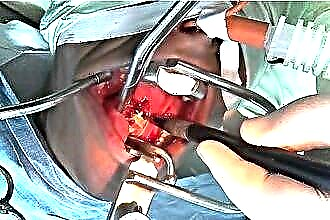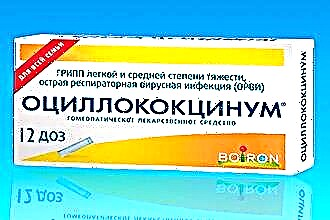Ear inflammation is quite often a complication of influenza and other acute respiratory viral infections in children. In this case, the disease is characterized by a completely benign course and is not severe. However, in some cases, the course of otitis media can be fulminant, with the development of life-threatening complications. Due to the fact that tens of thousands of people die from complications of otitis media every year in the world, the importance of preventing this pathology is great.

Factors contributing to the development of otitis media in children are:
- structural features of the organ of hearing and nasopharynx in a child;
- the presence of concomitant pathology of the ENT organs (curvature of the nasal septum, enlarged adenoids);
- frequent SARS;
- prolonged finding of infants in a horizontal position;
- food intake carried out by infants in a horizontal position;
- excessively active blowing of the nose.
Thus, the prevention of otitis media in children includes a set of measures aimed at eliminating these factors. If the anatomical features of the ear are present for a long time, until the auditory tube becomes longer with age, then other factors are quite amenable to correction.
Vaccination against ARVI is ineffective, since there are several hundred different causative agents of viral infection. Which of them will become pathogenic in each case is unknown.
A child who does not have respiratory infections cannot develop otitis media.
Consequently, measures aimed at preventing ARVI are relevant, such as the need to avoid crowded places during an epidemic, regular ventilation, and appropriate clothing.
If, nevertheless, we are talking about children prone to respiratory infections, then it is necessary to study the concomitant pathology of the ENT organs, leading to a narrowing of the auditory tube. The presence of enlarged adenoids or a deviated nasal septum leads to a retention of mucus in the auditory tube, a violation of its drainage function and, as a result, the development of inflammation of the middle ear.
In severe cases, when there are frequent otitis media, we can talk about surgical intervention aimed at eliminating the concomitant pathology of the ENT organs.
In order to prevent the throwing of milk into the tympanic cavity and further infection, the baby should be fed with the head end of the bed raised. Otherwise, the risk of liquid food entering the middle ear cavity increases. The child should be taught how to properly blow out the discharge from the nose, carrying out alternating actions with each half.
Importance of vaccination
The development of the most dangerous acute purulent otitis media is carried out by infection of the tympanic cavity with microorganisms such as Haemophilus influenzae, pneumococcus, moraxella. The danger of these pathogens also lies in the fact that, in addition to otitis media, they are the cause of the development of pneumonia, purulent meningitis. To prevent the risk of infection with these pathogens, there is a special vaccine.
The vaccine against otitis media, pneumonia, meningitis includes antigens against pneumococcus and Haemophilus influenzae. It is this vaccination against otitis media for children that is most widespread. The existing 2 vaccinations, Prevenar (made in the USA) and Pneumo-23 (France), differ not only by the manufacturer, but also by the fact that Prevenar can start vaccination much earlier, starting from the age of three months, which makes the vaccination more effective.
All healthy children aged 3 months to 6 years are subject to vaccination.
In many countries around the world, this vaccination is included in the calendar of mandatory vaccinations. A positive quality, in addition to sufficient effectiveness, is the possibility of combining it with other vaccinations, in particular, with DPT, which significantly saves time on visiting the clinic.
The vaccine is approved and recommended for use by WHO. Its effectiveness against otitis media is about 30%, that is, it prevents the development of one of three cases of acute purulent otitis media. The likelihood of contracting meningitis after vaccination is negligible.
The vaccine is well tolerated. Local reactions occur in 10% of cases and are characterized by reddening of the vaccination site, some swelling. Soreness at the injection site is of minor concern. General reactions develop only in 1% of vaccinated children and are manifested by slight malaise, drowsiness. There may be an increase in body temperature to subfebrile numbers.
The vaccine is administered intramuscularly, for children under one and a half years old in the thigh, for older children - in the shoulder in the amount of 0.5 ml. The vaccination schedule depends on the age of the patient. At the same time, immunity develops for a long time. Repeated vaccinations are carried out only for children with immunodeficiency conditions. For such patients, revaccination is indicated every 5 years.
Prevention of otitis media in children also includes general strengthening measures, such as a full-fledged balanced diet, adherence to a regimen, and walks in the fresh air. For older children, hardening can be helpful. Carrying out these activities helps to reduce the incidence of respiratory infections, which means it is also a prevention of otitis media.



